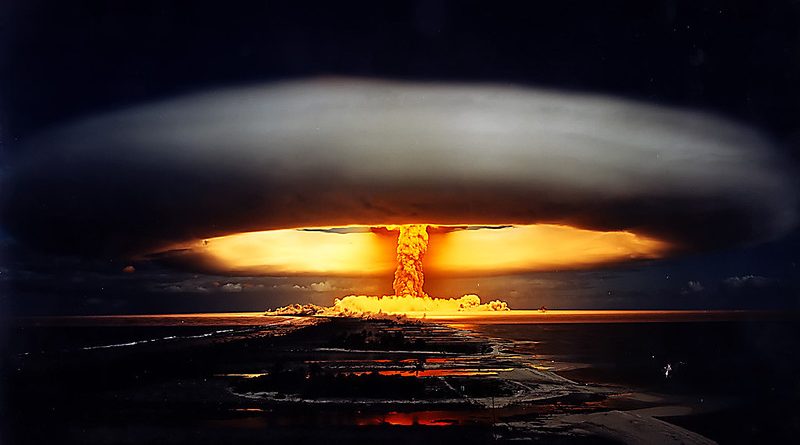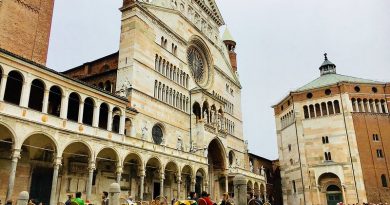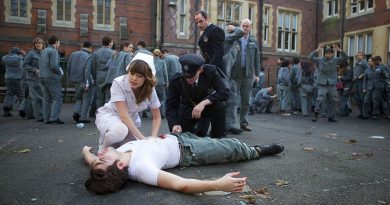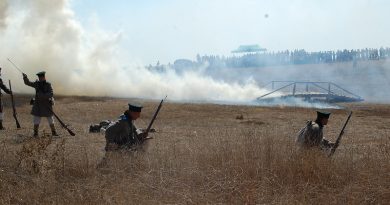French Nuclear Testing in Algeria
The most notable of which, ‘Gerboise Bleue’, was detonated in the middle of the Algerian Sahara desert on February 13, 1960 — during the Algerian War of Independence. The Gerboise Bleue blast was three times the size of Nagasaki.
The Plutonium filled bomb was detonated atop a 100m steel tower and observed from a distance of 16km. In order to study the immediate effects, military equipment was placed at varying distances from the epicenter, while jets flew overhead to take samples of radioactive particles. No journalists were allowed on site; instead, an eyewitness account was given to the French press, saying “the desert was lit up by a vast flash, followed 45 seconds later by an appreciable shock-wave; an “enormous ball of bluish fire with an orange-red centre” gave way to the typical “mushroom” cloud.
With Gerboise Bleue, France had become the world’s fourth nuclear power, after the United States, the USSR and the United Kingdom.
In France, the news of Gerboise Bleue’s success was generally met with satisfaction and national pride.
However, the nation faced many international critics following the nuclear test, especially from the African continent who were disappointed that France had used the Sahara as testing grounds for nuclear activities.
As a result of the ongoing Algerian war of Indpendence, the French military had agreed to withdraw from Algeria within 12 months. However, concessions were made and Algeria granted France “the use of a number of military airfields, the terrains, sites and installations necessary to her.”
It was because of this stipulation that France was able to continue nuclear testing in Algeria until 1966. Following Gerboise Bleue, the French went on to detonate the Gerboise Blanche, Gerboise Rouge and Gerboise Verte atmospheric atomic bombs, and the Rubis & the Saphir underground atomic bombs, all in Algeria.
All other French atomic-bomb tests, including Canopus, were carried out in French Polynesia from 1966 to 1996.




